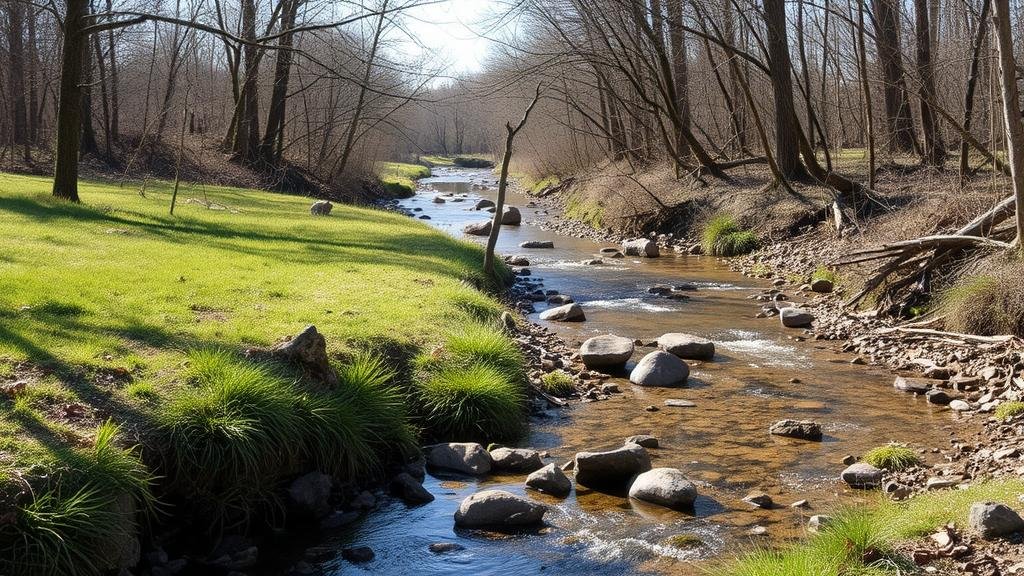Following Watercourses to Identify Historic Gathering and Ritual Areas
Following Watercourses to Identify Historic Gathering and Ritual Areas
The interplay between natural watercourses and human activities has long been a subject of fascination for anthropologists and historians. Water has been central to human survival, influencing settlement patterns, cultural practices, and social interactions. This article delves into the methodology and significance of tracing watercourses to uncover historic gathering and ritual areas, drawing on various examples from different cultures and time periods.
The Cultural Significance of Water
Water is not merely a physical resource; it serves as a cultural symbol, a source of life, and a medium for spiritual practices across various societies. Many indigenous groups consider water sacred, integral to their cosmologies and rituals. This cultural reverence fosters a strong connection to specific water bodies that are often the focal points for gatherings and rituals. For example, the Pueblo people of the Southwestern United States revere water sources like springs and rivers, incorporating them into their religious ceremonies.
Methodologies for Tracing Watercourses
The process of following watercourses involves a multifaceted approach combining archaeological fieldwork, geographical information systems (GIS), and ethnohistorical research. This methodology can be broken down into several key steps:
- Mapping Historical Watercourses: Utilizing old maps and documents to trace the historical extent of rivers, lakes, and streams.
- Field Surveys: Conducting on-site surveys in areas near these watercourses to locate artifacts and features indicative of human activity.
- Remote Sensing: Leveraging satellite imagery and aerial photographs to analyze land use changes and watercourse shifts over time.
- Interviews with Local Communities: Engaging with indigenous groups and local historians to gather oral histories and traditional ecological knowledge.
Case Studies of Historic Gathering Areas
Several notable case studies exemplify how following watercourses has led to the identification of historic gathering and ritual areas:
- The Amazon River Basin: Research throughout the Amazon has uncovered evidence of large settlements along its banks, with findings suggesting that watercourses were critical for trade and ritual exchanges among various tribes. Sites like Marajó Island reveal substantial earthen mounds that served as ceremonial centers.
- The Nile River: Ancient Egyptian civilization thrived along the Nile, where annual flooding provided fertile soil for agriculture. Ritual sites like Karnak Temple were built near its banks, emphasizing the rivers importance in religious and civic life.
- The Colorado River and Ancestral Puebloans: Studies of ancient dwellings in the Four Corners region of the U.S. indicate that the Ancestral Puebloans (formerly known as the Anasazi) utilized nearby water sources for habitation and ceremonial activities, aligning their structures with significant water locations.
Archaeological Evidence and Interpretation
Archaeological studies reveal a wealth of material culture associated with historic gathering areas. Key findings include:
- Artifacts: Tools, pottery, and other remnants discovered in proximity to watercourses often signify not just daily living but also communal and ritual activities.
- Architecture: The layout of structures may align with the surrounding water features, suggesting deliberate planning in relation to these vital resources.
- Symbolic Markers: Rock art, petroglyphs, and ceremonial sites frequently appear near water sources, reflecting their importance in the cultural narratives of the communities.
Challenges and Considerations
While following watercourses can yield significant insights, several challenges must be addressed:
- Environmental Changes: Climate change and human activity can alter watercourses, complicating historical connections.
- Legal and Ethical Issues: Excavation and research may face hurdles due to land ownership and the rights of indigenous communities.
- Data Limitations: Historical records may be sparse or incomplete, necessitating caution in interpretation and conclusions.
Conclusion and Actionable Takeaways
Following watercourses to identify historic gathering and ritual areas offers valuable insights into the intersection of environment and culture. By employing diverse methodologies–mapping, field surveys, remote sensing, and community engagement–researchers can uncover the profound connections between people and water that have shaped societies throughout history. As modern scholars continue to explore these themes, it is crucial to respect local histories and involve indigenous perspectives in the narrative.
To delve into this topic further, practitioners and enthusiasts can:
- Participate in local archaeological surveys to gain firsthand experience.
- Engage with indigenous communities to learn about traditional practices related to water.
- Use GIS technology to analyze historical data and create visual representations of water-related activities.



